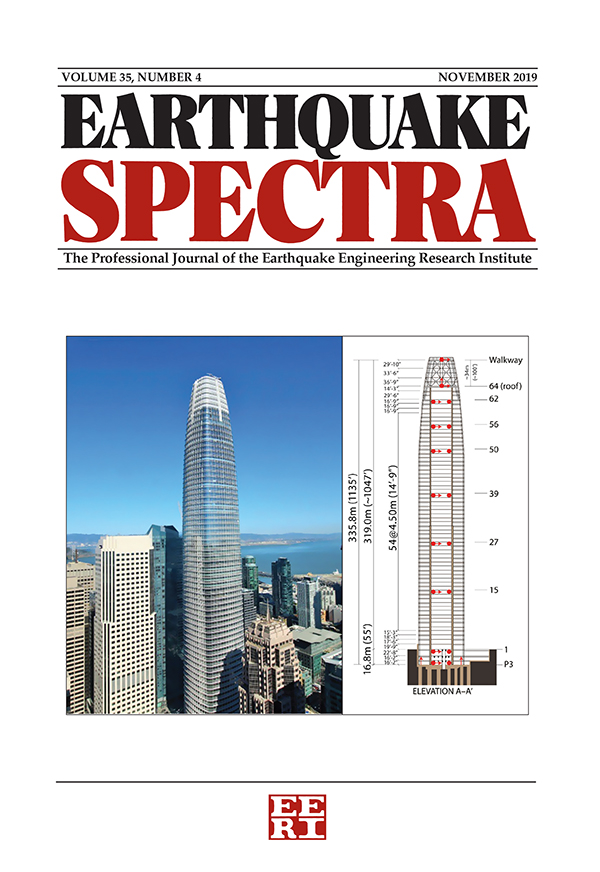概率模型错误规范对地震性能评估所需地面运动次数的影响
IF 3.7
2区 工程技术
Q2 ENGINEERING, CIVIL
引用次数: 0
摘要
非线性响应历史分析(NRHA)中使用的地震动数量决定了地震性能评估中获得的参数估计的精度。虽然地震工程文献对这一问题进行了广泛的研究,但还没有研究过概率模型指定错误与参数估计不确定性之间的关系,以及对 NRHA 所需地震动次数的影响。概率模型的错误规范有可能增加估算的不确定性,因此与不考虑错误规范的情况相比,需要更多的地面运动才能达到相同的精度。本研究开发了一种程序,用于确定在可能存在概率模型错误规范的情况下,地震规范规定性评估和基于风险的评估所需的地面运动数量。具体来说,我们采用了对概率模型误判具有鲁棒性的准最大似然估计法(QMLE)来评估估计的不确定性。QMLE 方法适用于两种地震评估方案下的加州桥梁原型。在规范性评估中,发现了对桥柱延性需求的离散性估计的失准误差。在基于风险的评估中,最极端的情况是,错误指定使超过极限状态的年平均频率的估计不确定性增加了三倍之多,这大大增加了所需的地面运动次数。根据这项研究的结果,我们提倡使用 QMLE 来检测和纠正模型错误规范对估计不确定性和概率地震性能评估中使用的地面运动数量的影响。本文章由计算机程序翻译,如有差异,请以英文原文为准。
Effects of probability model misspecification on the number of ground motions required for seismic performance assessment
The number of ground motions used in nonlinear response history analysis (NRHA) determines the precision of the parameter estimates obtained in seismic performance assessments. While this issue has been extensively studied in the earthquake engineering literature, the relationship of probability model misspecification to parameter estimation uncertainty, and the implication to the required number of ground motions needed for NRHA, has not been examined. Probability model misspecification has the potential to increase estimation uncertainty and hence requires a greater number of ground motions to achieve the same precision compared to when misspecification is disregarded. This study develops a procedure to determine the required number of ground motions in seismic code-prescriptive and risk-based assessments with possible probability model misspecification. Specifically, we employ the quasi-maximum likelihood estimation (QMLE), which is robust to probability model misspecification, to evaluate estimation uncertainty. The QMLE approach is applied to an archetype California bridge under the two seismic assessment scenarios. In the code-prescriptive assessment, misspecification errors are identified for dispersion estimates of the bridge column ductility demand. In the most extreme case of the risk-based evaluation, misspecification increases the estimation uncertainty of the mean annual frequency of exceeding a limit state by as much as three times, which substantially increases the required number of ground motions. Based on the findings from this study, we advocate for the use of QMLE to detect and rectify the implications of model misspecification to estimation uncertainty and the number of ground motions used in probabilistic seismic performance assessments.
求助全文
通过发布文献求助,成功后即可免费获取论文全文。
去求助
来源期刊

Earthquake Spectra
工程技术-工程:地质
CiteScore
8.40
自引率
12.00%
发文量
88
审稿时长
6-12 weeks
期刊介绍:
Earthquake Spectra, the professional peer-reviewed journal of the Earthquake Engineering Research Institute (EERI), serves as the publication of record for the development of earthquake engineering practice, earthquake codes and regulations, earthquake public policy, and earthquake investigation reports. The journal is published quarterly in both printed and online editions in February, May, August, and November, with additional special edition issues.
EERI established Earthquake Spectra with the purpose of improving the practice of earthquake hazards mitigation, preparedness, and recovery — serving the informational needs of the diverse professionals engaged in earthquake risk reduction: civil, geotechnical, mechanical, and structural engineers; geologists, seismologists, and other earth scientists; architects and city planners; public officials; social scientists; and researchers.
 求助内容:
求助内容: 应助结果提醒方式:
应助结果提醒方式:


